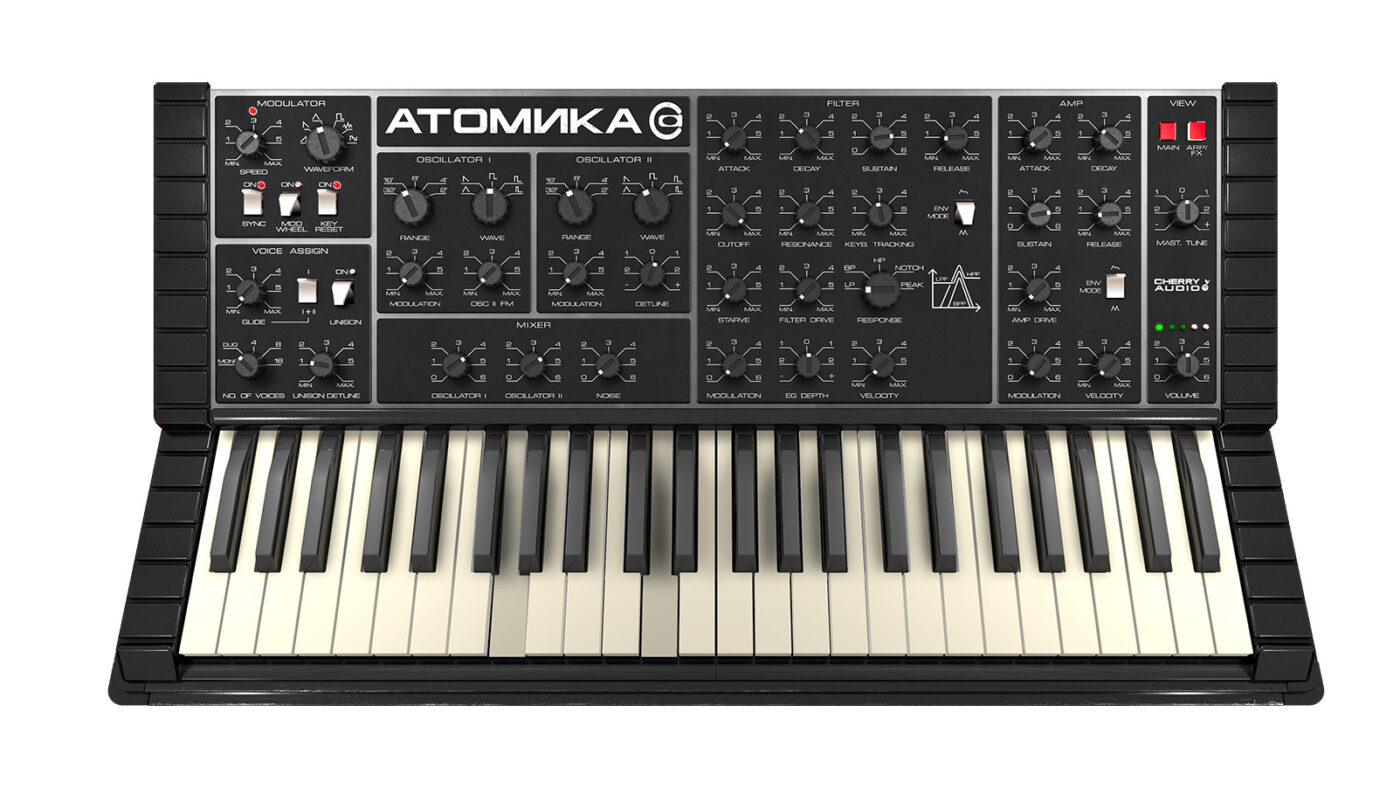The US developer puts a fresh spin on the Polivoks, with extra polyphony, expanded modulation and new effects

In recent years, US developer Cherry Audio has emerged as an incredibly prolific emulator of vintage instruments, giving even Arturia a run for its money. In the past twelve months alone, Cherry has released virtual recreations of the Rhodes Chroma, Korg PS-3300, GG Audio Blue3 organ, Wurlitzer 140B, ARP Pro Soloist, Oberheim’s SEM modules and Roland’s CR-78 drum machine.
Churning out plugins is one thing, but what’s been most impressive about Cherry Audio’s recent output is its consistent quality – its instruments have picked up multiple five-star ratings in our reviews over the past few years.
With its latest plugin Atomika, Cherry Audio’s sights are set on the Soviet-era Formanta Polivoks, a two-voice analogue synthesizer produced and sold in the USSR during the 1980s. Although rare in the West at the time of its production, the Polivoks has become sought-after on the second hand market due to its distinctive sound, which comes from its notoriously unstable oscillators, gritty filter and quick-to-distort signal path.
Atomika aims to capture that personality, but also expands on the design of the original in several important ways. The polyphony is raised from the Polivoks’ two-voices to a total of 16, with the extra addition of a unison mode. Atomika also expands on the flexibility of the original’s low/band-pass filter with new high-pass, notch and peak modes.
The LFO section has been expanded here too, with more waveshape options. Atomika also broadens the performance and modulation options by letting users route velocity, aftertouch, key-tracking, pitch and mod wheel into the synth engine.
On top of this, Atomika also throws a new effect section into the mix, with phaser, flange/chorus, delay and reverb modules, along with a simple arpeggiator.
Like other Cherry Audio plugins, Atomika benefits from a smart, resizable UI with a ‘focus’ zoom feature, and user-definable oversampling. While the plugin’s interface is labelled in English by default, users can also opt for a theme that reverts to the original Cyrillic script.
